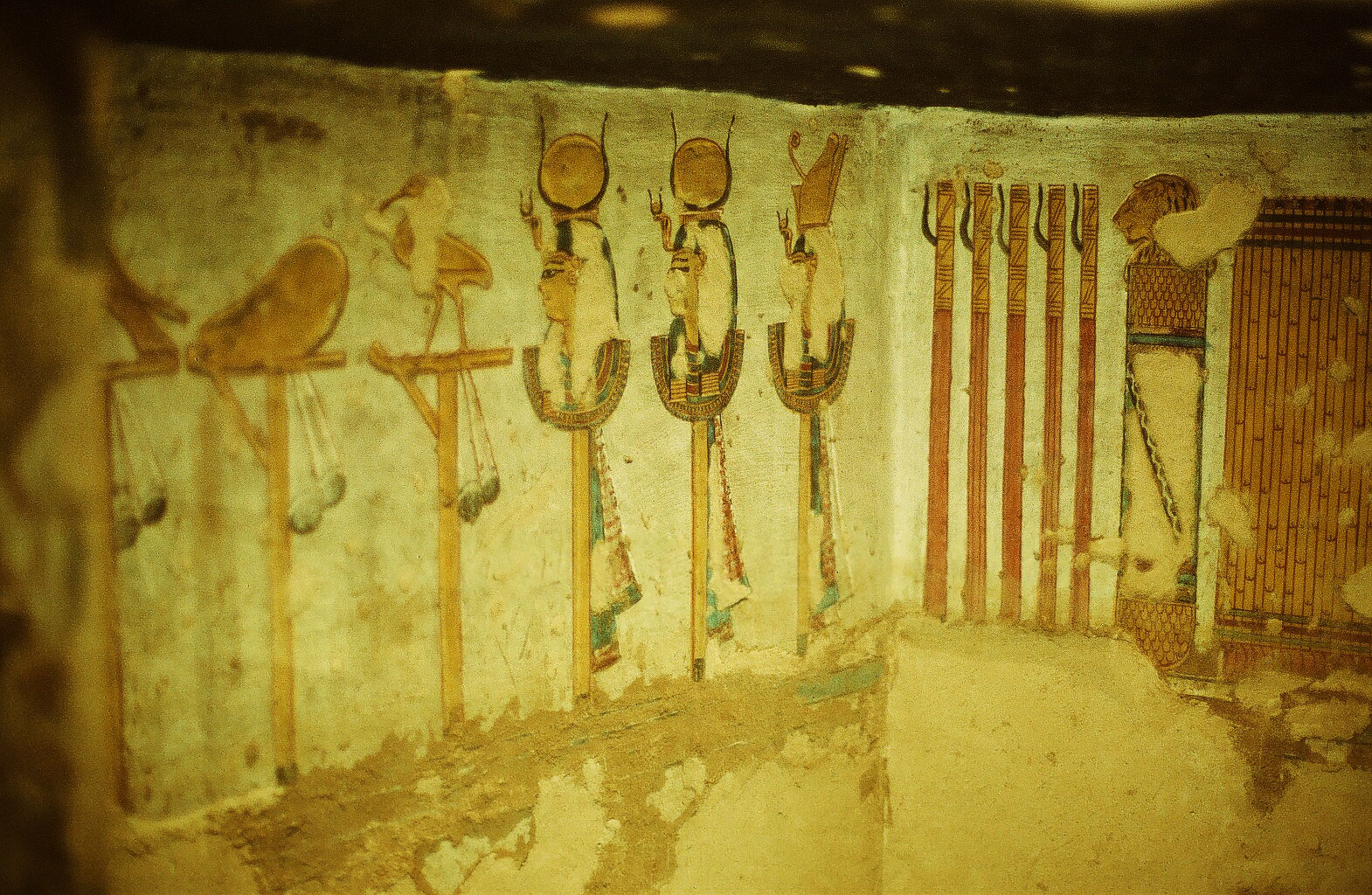ABOUT THE CONSORTIUM
Project Description
Background of the Project
The Valley of the Kings, in Luxor, 500 miles south of Cairo, is one of the most famous archaeological sites in the world. It contains some of the most important sites of antiquity, including the tomb of King Tutankhamun, as well as tombs of many other great Kings of Egypt’s 18th, 19th, and 20thDynasties, including Ramses II, Ramses the Great, perhaps the Pharaoh of the Biblical Exodus.
Those tombs contain a treasure trove of Egyptian art, history, religious beliefs, and practices. There are tombs yet to be discovered, which surely exist. While movable objects found in the excavated tombs have been dispersed to museums in Egypt and the world, the tombs and their decorated interiors cannot be removed. They are carved out living rock and must remain in situ.
Though carved out of solid rock, the tombs are fragile and under constant threat of destruction and deterioration from a number of sources, principally water damage. This is due to periodic flooding of the Valley caused by rainstorms in the Western desert. These rains drain into the Valley, carving out deep channels in its center, often overflowing into the decorated tombs.
 These floods carry abrasive sand and rock from the desert, as well as the upper reaches of the Valley. If the volume of water is great enough, this may even include large boulders. The water and debris can completely destroy a tomb, as the water and sand will scour the decoration off of the painted surfaces. Painted decoration within the tombs is not fresco, which is painted on wet plaster and becomes part of that plaster, but was applied on a dry plaster surface. Paints used by the ancient Egyptians were water soluble and, unlike fresco paintings, can be completely dissolved and washed away in the event a tomb floods.
These floods carry abrasive sand and rock from the desert, as well as the upper reaches of the Valley. If the volume of water is great enough, this may even include large boulders. The water and debris can completely destroy a tomb, as the water and sand will scour the decoration off of the painted surfaces. Painted decoration within the tombs is not fresco, which is painted on wet plaster and becomes part of that plaster, but was applied on a dry plaster surface. Paints used by the ancient Egyptians were water soluble and, unlike fresco paintings, can be completely dissolved and washed away in the event a tomb floods.
The tombs in the Valley were carved out of limestone, a porous sedimentary rock deposited over millions of years when the Nile valley was under water. Beneath the limestone is a layer of shale, another sedimentary stone. Shale is very soft and even more porous than the limestone above it. When it comes into contact with water making its way down through the limestone, it becomes extraordinarily expansive. Like a dry sponge exposed to water, it rapidly expands to a volume many times its dry state. When this happens, the shale thrusts upward with tremendous pressure. This damages the tombs above by causing structural failure of the stone columns supporting the roofs of the tombs. When the support columns fail, the decorated ceilings of the tombs, now unsupported, collapse, resulting in complete loss of their painted decoration. The structural failure may also result in a collapse of substantial portions of the tomb chambers themselves.
Many of the tombs in the Valley have experienced repeated flooding in the past, some, such as that of Tutankhamun and Horemheb, within the last decade of the twentieth century. Other tombs, such as that of Ramses the Great, have been almost completely destroyed by such events and are closed to all but specialists because they are dangerous. Others, less damaged, are clearly at risk and urgently need to be protected.
The Consortium
The Valley of the Kings Archaeological and Conservation Consortium is an international group of Egyptologists, archaeologists, archaeological conservators and related professionals, dedicated to the preservation and related excavation of the Valley and its tombs. They aim not only to preserve what is already excavated but to carry on additional excavations in a responsible and professional manner, so as to salvage as much information and material remains from this important site as possible.
The individual members of the Consortium are all deeply experienced in fieldwork in Egypt, having worked in the Valley of the Kings and other sites in Luxor, as well as other of the most important sites in Egypt such as Giza, site of the Great Pyramid, Saqarra, Hierakonpolis, and others. They include a former Minister of Antiquities, a former head of conservation for all museums in Egypt, Directors, Assistant Directors and Chief Conservators of other archaeological and conservation projects in Egypt, specialists in geology, stone masons and others with long and substantial experience in ancient Egyptian monuments. Institutional members include the first Egyptian non-profit corporation devoted to conservation and preservation of the ancient monuments.
The Consortium is a tax-exempt non-profit organization, incorporated in California. It has obtained United States Federal Tax Exempt Status under Internal Revenue Code Section 501(c) (3), as well as under California Revenue and Taxation Code, Section 23701(d). Contributions to the Consortium are therefore Federal and California Income Tax deductible. A copy of the exemption letters received from the Internal Revenue Service and Franchise Tax Board appear separately on our website.
What the Consortium Intends to Do
The consortium intends to initially undertake an on the ground condition survey of the Valley and the endangered tombs in it, identifying each specific form of threats facing each tomb, then prioritize them for remedial work to eliminate, or mitigate, the threats, beginning with the most urgent and dangerous. That work will deal with several concerns. One is restoration of the ancient water control system above and surrounding the Valley, created when the Valley was in active use, which over the centuries has deteriorated, or been partially destroyed, as well as the use of new, modern flood control techniques.
In certain areas of the Valley, it is anticipated that modern-day ground levels may be reduced by selective excavation and removal of debris that has built up over the centuries. This caused ground level to rise significantly and dangerously above the ground level of ancient times. This will lower the water level of future floods to below the entrance to the tombs, and may also uncover elements of the ancient water control system within the Valley, important elements of which have been discovered in excavations carried out by the Ministry of Antiquities in the last decade, which can then be restored.
A second prime concern is tombs exhibiting structural damage from prior floods. These will be conserved and structurally reinforced to prevent any additional damage or collapse. Already existing damage has, in some cases, prevented clearance of these tombs. The Consortium will undertake this, so that needed repairs and structural reinforcement may be carried out. An already known unconserved and uncleared royal tomb is the first target of the Consortium.
“Those tombs contain a treasure trove of Egyptian art, history, religious beliefs, and practices.”
“There are material remains yet to be discovered in tombs not yet found, but which surely exist.”
“Together, we can achieve great things and save these monuments for future generations.”


